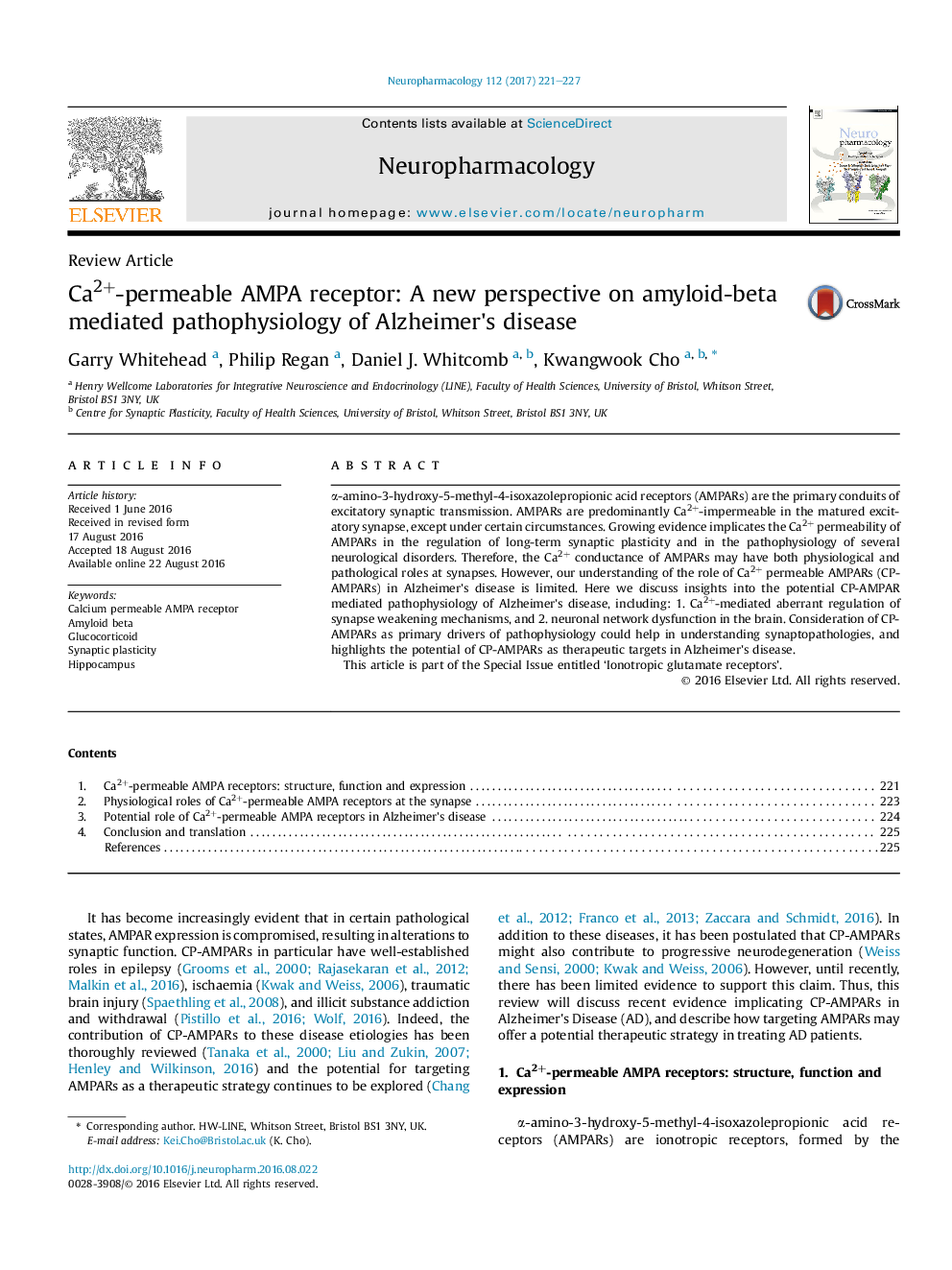| Article ID | Journal | Published Year | Pages | File Type |
|---|---|---|---|---|
| 5549118 | Neuropharmacology | 2017 | 7 Pages |
α-amino-3-hydroxy-5-methyl-4-isoxazolepropionic acid receptors (AMPARs) are the primary conduits of excitatory synaptic transmission. AMPARs are predominantly Ca2+-impermeable in the matured excitatory synapse, except under certain circumstances. Growing evidence implicates the Ca2+ permeability of AMPARs in the regulation of long-term synaptic plasticity and in the pathophysiology of several neurological disorders. Therefore, the Ca2+ conductance of AMPARs may have both physiological and pathological roles at synapses. However, our understanding of the role of Ca2+ permeable AMPARs (CP-AMPARs) in Alzheimer's disease is limited. Here we discuss insights into the potential CP-AMPAR mediated pathophysiology of Alzheimer's disease, including: 1. Ca2+-mediated aberrant regulation of synapse weakening mechanisms, and 2. neuronal network dysfunction in the brain. Consideration of CP-AMPARs as primary drivers of pathophysiology could help in understanding synaptopathologies, and highlights the potential of CP-AMPARs as therapeutic targets in Alzheimer's disease.This article is part of the Special Issue entitled 'Ionotropic glutamate receptors'.
